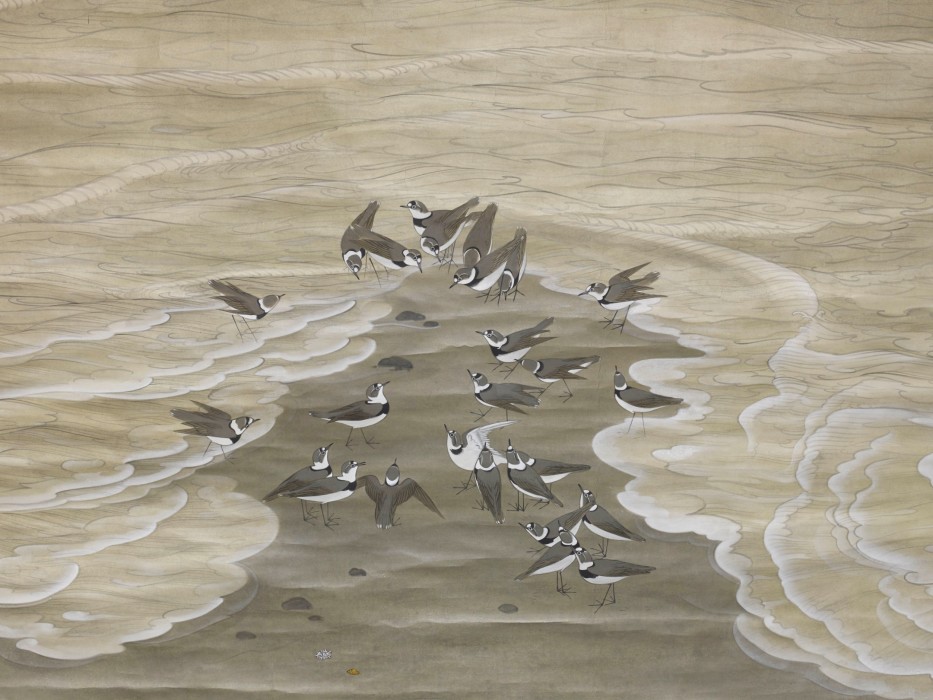Product Description
7388 A paper kakemono (hanging scroll) painted in ink and colour with a young Oiran (courtesan) ghost holding a parasol and dressed in a kimono, the obi (sash) tied at the front denoting her occupation bears a design of spider’s webs.
Signed: Shūhō
Seal: Shūhō
Japan 20th century Taishō/Shōwa period
Dimensions: Scroll: H. 79 ¾” x W.18½” (202 cm x 46.5 cm)
Painting: H. 50¼” x W. 11¼” (127.5 cm x 28.5 cm)
Tomobako (original box) inscribed:
Lid: Shūhō sensei hitsu yukon no zu shihon** (A ghost painted on paper by Shūhō)
Lid interior: Sōundō shujin kindai (The title humbly written by Sōundō)
Seal: **
Label: Sōundō Sanjūyon-gō, Yamakawa Shūhō (Collection of Sōundō gallery, No.34 by Yamakawa Shūhō)
Hansetsu yūkon *gaki dayū (A ghost of a courtesan named **gaki)
** (illegible)
Yamakawa Shūhō (1898-1944) Given name: Yoshio Gō (art name): Shūhō
Born in Kyoto, Shūhō initially studied kachōga (bird and flower painting) under Ikegami Shūhō (1874-1944). In 1913 he joined the well known nihonga (Japanese style) artist Kaburagi Kiyokata (1878-1973) and furthered his studies in the fields of painting and printmaking along with fellow students, Ito Shinsui (1898-1972), Kawase Hasui (1883-1957) and Torii Kotondo (1900-1976) and soon gained a reputation as a highly talented bijinga (paintings of beauties) artist.
In 1919, Shūhō exhibited at Teiten (the Imperial Fine Art Exhibition) for the first time and went on to win the Tokusen (Speciality) prize in 1928 and 1930.
During the 1930’s Shūhō worked primarily as an illustrator and is known for his woodblock prints as well as his painting. His work was regularly published by the Bijutsusha house and Watanabe Shozaburo, the main publishers for the Shin Hanga (New Print) movement. He also produced illustrations for the magazines Kodansha Club and King.
In 1936 he co-founded the art group Seikinkai (‘Blue Collar Society’) with fellow student and bijin-ga artist, Ito Shinsui.
His art was strongly influenced by the Ukiyo-e tradition but his painting has always been finer, more naturalistic and less stylised.
Works by the artist can be found in the collection of: Honolulu Museum of Art, Hawaii; The National Museum of Modern Art, Tokyo.









